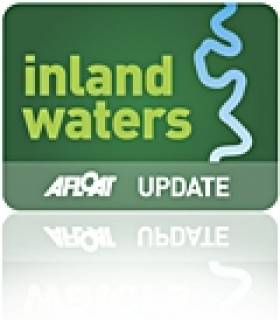Displaying items by tag: TriAthlone
Waterways Ireland TriAthlone Launches With A Splash
#TriAthlone - This Saturday 5 July sees the return of Ireland's original town-centre triathlon, the Waterways Ireland TriAthlone, for its ninth edition on the River Shannon.
Yesterday the local organising committee were joined by Triathlon Ireland vice-president Tony Daley and Charles Lawn, inspector of navigation with Waterways Ireland, to launch this year's event, which will see the return of the Vodafone Triathlon Ireland Sprint Series, alongside the Paratriathlon National Championship, which has found its home in Athlone since the hosting of a record-breaking European Championships in 2010.
As for the main event, 2013 Athlone European Junior Cup Champion and former World Junior Championships Bronze medalist Con Doherty leads the field and is favourite to be crowned champion this year, but certainly not without a challenge.
The day promises an exciting spectacle, with the genuine stars of the future battling it out in the River Shannon and on the streets of the Midlands town for national honours.
With almost every county in Ireland represented and up to 15,000 spectators expected to line the streets, Athlone is gearing up for yet another great triathlon.
And this year spectators can track triathletes as they make their way around the course via a free app for smartphones. Details of how to get the app are available at www.triathlone.com.
The Waterways Ireland TriAthlone begins with a swim in the River Shannon, from which the competitors will then take to their bikes for a cycle through South Co Roscommon before the exciting towncentre run which will see the event finish in the heart of Athlone.
Speaking about the event, chairman Liam Heavin said: "2014 promises to be another very exciting year in Athlone, and it's a privilege for us to host the top national athletes as part of the Vodafone National Series. This has been a team effort and couldn't be achieved without the support of Waterways Ireland and Westmeath County Council.
"We would like to encourage as many people as possible to come along and support the event this weekend!"























